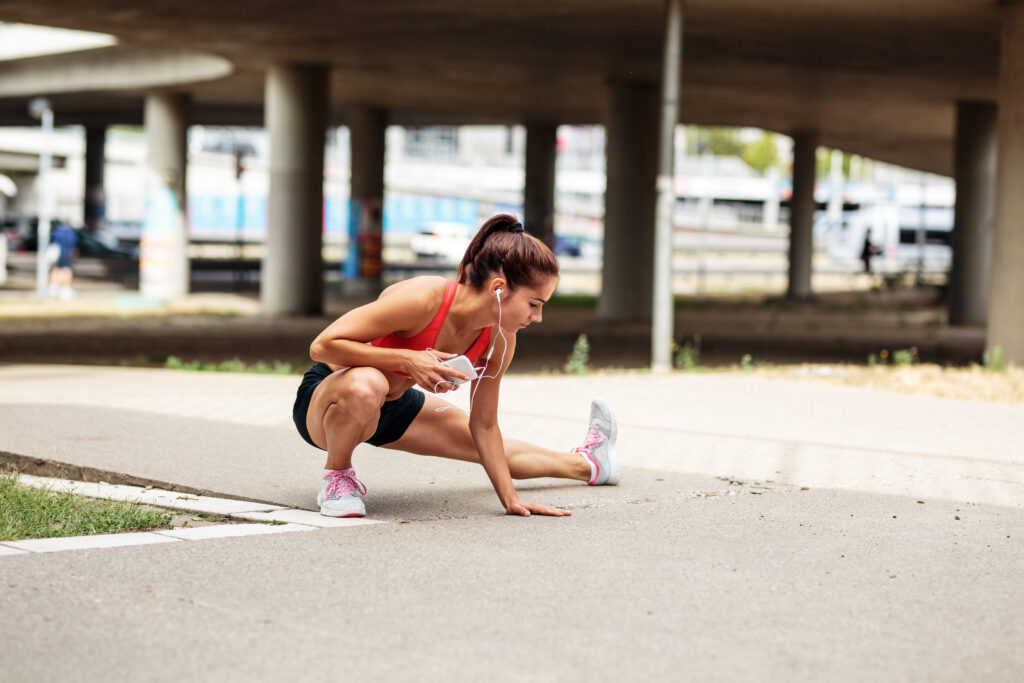It’s important for those who regularly jog or run to stay fit to include stretching in the routine. If you head straight out the door for your running routine without ample preparation, it might not be beneficial in the long run. Remember that running with tight, stiff muscles will put you at a higher risk for injury over time. Taking the time to perform a few stretches before your run maintains or improves your range of motion and flexibility. When you are out there running every day, you’re putting stress on your body like nothing else. In some cases, an injury as a result of pushing your body could lead to a knee replacement, but if you’re smart about stretching and preparing your body properly, you’re going to be able to continue to run without damaging your body. Running can help you to build your fitness, and you want to be able to do that without hurting yourself. The best thing that you can do is learn how you can stretch and avoid those stiff muscles or any injuries. Taking the time to work on yourself is important, but you need to be safe while you do it.
If you’ve been wondering – should I stretch before or after a run? The answer is – stretch before, but it should be dynamic. The issue of stretching has been a hot topic. Based on the latest sources, there’s no proof that static stretching prevents injury or boosts performance. If you want to lessen the likelihood of injury, dynamic stretching is the key, which involves motions that stretches the muscles without holding in a single position for long periods.
Before your running routine, warm up with dynamic stretching for 10-15 minutes. These stretching exercises will enhance your range of motion and loosen up the muscles. Additionally, they’ll boost your heart rate, blood flow, and body temperature so that you’ll be ready for your run.
Try including these stretching exercises recommended by one of the leading sports podiatrist Sunshine Coast on your next regular run:
Leg Swings
During this exercise, swing your leg, one at a time – forward, back, and side-to-side. You can hold on to a table, wall, or bench to maintain your balance. Allow your muscles and joints to swing through a full range of motion.
It increases the mobility of the abductor/adductor muscles, hamstring/hip flexor muscles and strengthens the core.
Activating The Glutes And Piriformis
Stand up straight while keeping your posture and balance in check. Bring your ankle up while inverting your foot towards the knee and then the waist. It will stretch the glute and lateral quad area. Perform three sets with a walk back recovery in between.
This dynamic stretch is ideal for the hips, glutes, lower back, and the lateral quad. It will mobilize the glutes and lateral quad areas before your running routine.
Mobilizing The Ankle And Calf
Position your foot on the ground with the toe and ball of the foot first. Lower your weight through the foot to allow the heel to return to the ground. It’s simply the opposite of walking, where you move from toe to heel. Perform 15-30 seconds while alternating on each foot and leg. Try to do three sets for this exercise.
Including this as part of your warm-up helps strengthen the Achilles and calf. It mobilizes and improves flexibility at the same time. The exercise also lowers your risk for ankle issues such as a sprain or Achilles tendinopathy.
Hamstring Sweep
Do a brief stride ahead while planting the heel securely on the ground. Ensure that the front leg is in a straight position and bend the knee backward, lowering your body to the ground as if you’ll sit in a chair. At the same time, while keeping the front leg in a straight position, sweep down with your hands towards the ground to produce a dynamic stretch on your hamstrings.
Try doing three sets for this exercise. This exercise aims at conditioning and keeping your hamstrings flexible before your run.
Quadriceps Stretch
Stand upright and draw your leg behind you with your parallel hand. Pinch your pelvis and haul your shin toward the thigh. Make sure that your knee is pointing downward while performing the stretch to protect your knee joint. Maintain the stretch for 30 seconds and switch to the opposite side.
You can use a chair to maintain your balance. This exercise will stretch the front part of your thigh and from your hip down to the knee. The quadriceps femoris muscle covers the majority of the front and sides of your thighs. For those who are running up or down hills, proper stretching of the quadriceps is important.
Final Thoughts
Depending on the running routine you are regularly doing, the addition of stretching in the warm-up phase can positively prepare your body for a great workout that’ll keep your fitness level in top form. Just like any other physical activity, performing proper warm-up with stretching can help make your workout effective in the long run. Even if you’re just planning to do a quick run, make sure to perform these stretching exercises to get the most out of your workout routine.

